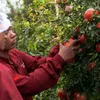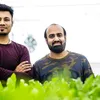How women from Hazaribagh are sparking a green revolution in the heart of India's coal state
Women farmers like Rina Yadav — a mother of three — are part of PRADAN and Corteva Agriscience's initiative to promote sustainable agriculture and financial literacy in Hazaribagh, Jharkhand.
Despite India slipping into recession due to the coronavirus-induced lockdown, the agricultural sector has proved to be a buoyant force as the sector did not see a contraction.
According to the Food and Agricultural Organisation (FAO), more than half of India’s population is employed in farming and related activities, with small and marginal farmers forming the backbone of India’s agricultural and rural economy.
Small and marginal farmers, constituting around 78 percent of India’s agricultural workforce, own and cultivate less than two hectares of land — around one-third of total cultivated land — but contribute to 41 percent of the national grain production.
According to the United Nations, these farmers are essential to the eradication of rural poverty, hunger, and malnutrition, as well as in preserving natural resources and biodiversity.
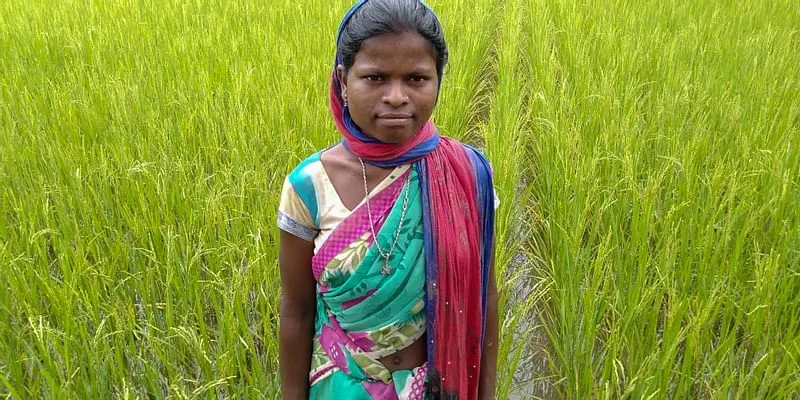
A women agriculture entrepreneur from Hazaribagh
Agriculture in a coal country
Small-scale farmers dominate many districts of India; one of them is Hazaribagh in Jharkhand.
Traditionally a coal miner’s country — with the district having the second-highest coal reserves in the state — it houses one of India’s two Indian Agricultural Research Institute (IARI).
The region is mostly dependent on rain-fed agriculture, and farmers often opt for mono-cropping (one crop in one season) to grow their staple food, such as paddy, millets, etc.
“Hazaribagh is a scattered area, having majorly three different types of land (upland, middle land, and low land), and less than 15 percent population have sound knowledge of irrigation practices. Therefore, it’s been observed over time that farmers use the upland very less due to lack of irrigation and low fertility of that land,” observes Aruna Rachakonda, Marketing Director, Corteva Agriscience – India and South Asia, a global pure-play agriculture company.
With the district being one of the first to abolish zamindari in the 1950s, a lot of locals were able to own land. However, this posed a challenge as landholding steadily declined with the increase in population, resulting in agriculture becoming remunerative. This pushed small-scale farmers to fall prey into a vicious trap of low investment and productivity.
As farming — as the only source of income — became untenable, the region witnessed significant migration with male members of the family moving to cities in search of jobs, while women taking care of the family and the crops back home.
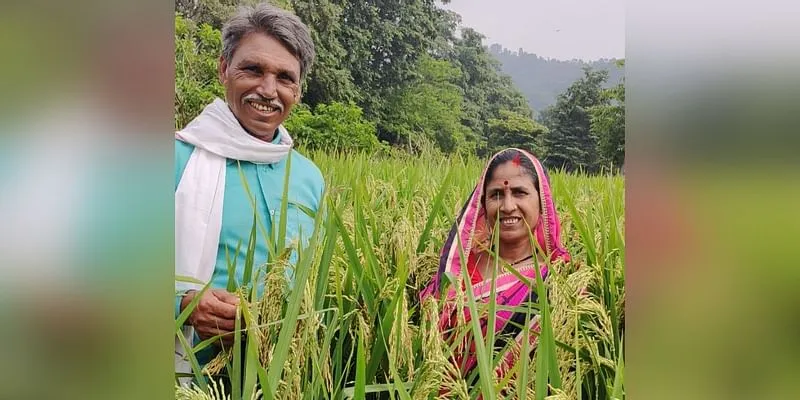
Under the “Empowering women through Financial Inclusion and Direct Seeded Rice (DSR) cultivation in Jharkhand and Bihar” initiative, women farmers support their families with their agri ventures
Empowering women agripreneurs
However, men continued to be the decision-makers regarding agriculture. This led PRADAN, a non-profit organisation working towards eradicating endemic poverty in rural India, and Corteva Agriscience, to initiate a project titled, “Empowering women through Financial Inclusion and Direct Seeded Rice (DSR) cultivation in Jharkhand and Bihar.”
“With our initiatives like developing agri-entrepreneurs, we were hoping to bring some independence to the women, who were now easily doubling their role as a farmer and homemaker. This initiative helped build the capacity of women as a farmer and understand the issues about money, etc. It helped them learn efficient decision-making, helping these women better negotiate — be it at home to select the crop of their choice or for better income realisation — and utilisation of money,” Aruna tells SocialStory.
The programme has helped 10 women agripreneurs in Hazaribagh to earn an additional Rs 5,000 – Rs 8,000 per season by centrally raising seedlings of tomato, brinjal, and chilli.
Moreover, the programme grooms women farmers to become community service providers and community resource persons, who further offer training in Direct Seed Rice and other sustainable technologies to women and men farmers.
“The programme has been established to develop a self-sustainable support system for women farmers. Starting from capacity building on various aspects such as agronomy, financial literacy, water conservation, and soil health, it also helped establish Farmer-Producer Organisations (FPOs) to sell the produce at a better price, providing them with credit linkages to government-established programmes,” she adds.
The role of FPOs is to provide technical assistance of agriculture entrepreneurs, collectivise their businesses to negotiate better rates, and enhance the income of small-holder farmers.
Last year, a total Rs 6 lakh worth of credit linkage was been done under the support of PRADAN, Corteva, and women-led self-help groups (SHGs).
These women also serve as the nodal point for enabling farm mechanisation by working with FPO custom hiring centres, as well as to create market linkages. They also help farmers to grow food crops systematically, promoting DSR paddy to cope with the issue of water scarcity, and erratic rainfall.
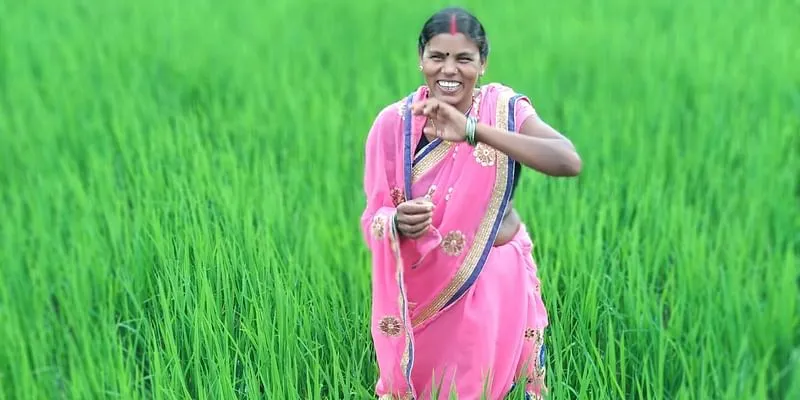
Rina Yadav - a mother of three - became an agricultural entrepreneur through the initiative by PRADAN and Corteva Agriscience
The story of Rina Yadav
Living in the remote village of Dharmapur in a family of five, Rina Yadav used to farm in the family’s land, as well as manage the household work. Her family used to earn an annual income of Rs 80,000 – less than India’s average per capita income of Rs 1.25 lakh.
In 2020, she met with other women entrepreneurs and showed interest in becoming an agricultural entrepreneur through the initiative. Though initially struggling with capital and access to market, the programme helped her in her business venture of suppling of seed and seedling for vegetables and compost fertiliser.
This year, she has done a business of three million tonnes of paddy seed, one million tonnes of pigeon pea seed, 0.5 MT of groundnut seed, and four kg of vegetable seed.
In input selling, her turnover was Rs 5.5 lakh, and she has made a profit of Rs 45,000. She also raised two lakh vegetable seedling with a turnover of Rs 1.8 lakh, where she earned Rs 35,000 as profit. Along with selling Shivansh Khad (compost fertiliser), she earned a net profit of Rs 86,000 from her business this year. She now plans to expand her business.
“We firmly believe that women can bring a significant change in agriculture. Therefore, we decided to groom women as farmers,” says Aruna.
The project has also expanded to the districts of Khunti and Nawada in Jharkhand.
Edited by Suman Singh



